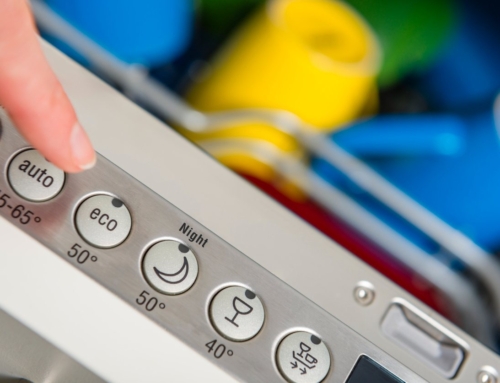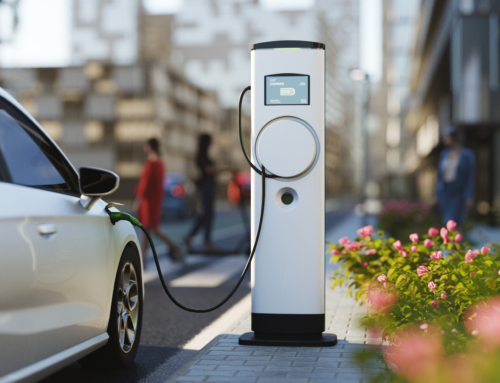The urge to spruce up your home can strike as soon as the first signs of spring appear. But what about spring cleaning for your yard?
Taking care of your outdoor space is just as important as your indoor areas. Keep eco-friendliness in mind as you search for ways to approach yard cleanup this spring. This guide is here to help you know when to do spring yard cleanup, what to do, and how to do it one step at a time.

Why Clean Up Your Yard in the Spring?
After winter, your yard is probably full of dead plants, dull and dirty surfaces, and scattered debris. Cleaning this up in the spring can pave the way for your future garden to flourish and establish a neat, relaxing space for you and your family to spend time together during the warmest months of the year.
When Is the Best Time to Do a Spring Yard Cleanup?
Though you may feel compelled to get started as soon as the temperatures begin to increase, there are good reasons to hold off for the health of your yard and the ecosystem at large. It’s best to wait until temperatures exceed 50 degrees F for at least several days.
Many pollinators find winter shelter beneath debris and plants. Clearing these areas too early can harm their populations and, in turn, your yard and garden.
Eco-friendly Yard Cleanup Checklist
What does a spring cleanup include? This comprehensive checklist covers tips to keep the process environmentally friendly for your yard.
Clear Debris
Your yard may have accumulated a few extra branches and leaves throughout the winter. First things first: take some time to go around the yard and pick up organic clutter and debris littering the area, ensuring to check corners and underneath larger plants for good measure.
Remove Weeds and Dead Foliage
Invasive weeds and unwanted plants may have cropped up in garden beds during late autumn or through the winter months. You may need to remove some existing plants, or at least parts of them, to allow new growth to thrive. Use reusable garden bags rather than plastic to keep your activities eco-friendly.
Mow the Grass
Your grass may have become slightly unruly over the winter months, but it also may be time to trim and make it look tidier. Now that it’s warmer, mowing the grass shorter than you would outside of the growing season is okay, keeping it as short as an inch and a half.
Remember that grass clippings provide natural nutrients for your lawn to grow, so it isn’t necessary to bag them after you finish. However, too many clippings or long grass may dry out and create more debris for you to clean up.
Trim Shrubs and Trees
Fortunately, the best time to trim your trees and bushes is late winter and early spring. It’s more manageable because you won’t have leaves blocking your way. Pruning just before new growth emerges allows cuts to heal better and direct nutrients toward new branches and limbs.
Reseed the Grass
Pets, storms, and foot traffic can wreak havoc on your lawn in the winter, mainly because it isn’t producing new blades of grass to replace damaged areas. Look around your yard for areas that could use grass seed and fertilizer, keeping the area moist while the seeds sprout.
Clear Walkways
In addition to any fallen leaves and other debris, your sidewalks and patio areas may have accumulated a few new weed patches along with mud, mold, and mildew, especially if you’ve lined these spots with pavers.
A good weeding and a powerwash can clear the area, but you can also use a little elbow grease to take care of stubborn mold or mildew growth without harsh chemicals. Mix 2 tablespoons of detergent and 2 cups of bleach into 2 quarts of warm water, scrubbing the solution into affected areas. Leave the solution in place for 15 minutes, then rinse well.
Check Sprinklers
If your yard uses a sprinkler system, now is an excellent time to de-winterize your sprinklers and ensure they’re ready. If necessary, call a lawn care professional to inspect and perform any maintenance on the system before you start planting.
Prepare Garden Beds
Whether you plan to grow vegetables, flowers, or other greenery, your plants need a clear, nourishing foundation to grow successfully. Take time to shape and edge your garden beds, and follow with healthy soil and fresh mulch. You may also apply a weed guard during preparation for added protection against weedy garden invaders.
Establish Pest Control
Pests hide where they can remain out of sight and near food or water sources. Clear debris and plan your yard layout to discourage pests. This step may include cutting back dense foliage, treating areas with preventive deterrents, and eliminating standing water. Ward off mosquitos in water features by killing their larvae with non-toxic Mosquito Dunks.
Make Repairs and Adjustments
Winter storms and neighborhood creatures may have damaged assets in your yard, like fences, partitions, or lighting fixtures. If so, now’s a great time to make those repairs. Doing so in the spring helps to keep hungry pests away from your garden. It allows you to complete these tasks earlier in the year rather than waiting to do them under the hot summer sun.
Clean Furniture
Your patio furniture likely needs a deep cleaning after winter. Mix some dish soap with warm water and take a scrub brush or washcloth to any metal or plastic furniture. After you rinse, let the pieces dry by placing them on their side to allow the water to drain off the surfaces.
For wicker or rattan furniture, dip a soft cloth in a mixture of mild soap and warm water. Clean the surface, using a small brush to get into the grooves. Don’t over-saturate the furniture as you rinse with a hose.
Tools for Spring Yard Cleanup
What is a spring cleanup without landscaping tools to get the job done? Ensure you have these tools to help with your upcoming yard work:
- Lawnmower
- Soil aerator
- Pruning shears
- Pop-up garden bags
- Garden saw
- Rake
- Trowel and shovel
- Wheelbarrow
Remember that you don’t need complicated tools or electrically powered instruments to keep your yard in good shape. Manual tools are excellent for most yard work and don’t require gas to power them.
If you use an electric tool, choose energy-efficient or rechargeable devices to reduce energy consumption and keep your work as environmentally friendly as possible.
Keep Your Home Eco-Friendly Inside and Out
Preparing your yard for spring can create a better environment in your backyard and for the planet. After spring cleaning your outdoor spaces, don’t limit yourself to only using eco-friendly techniques outside. Find other ways to positively impact the environment by learning more about Spring Power and Gas energy plans.



![Top 11 Sustainable Building Practices for Eco-Homes [Plus 5 Sustainable Materials]](https://springpowerandgas.us/wp-content/uploads/2023/02/iStock-181062267-500x383.jpg)


